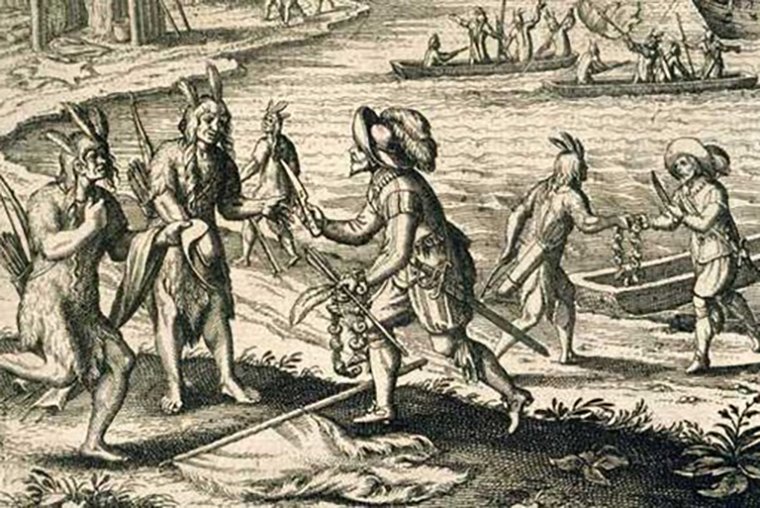Conny Waters - AncientPages.com - In American history, we learn that the arrival of Spanish explorers led by Hernando de Soto in the 1500s was an important historic moment.
This event resulted in the collapse of Indigenous tribes and traditions across the southeastern United States. Many Indigenous people died and the remaining tribes were relocated.

Now, new research from Washington University in St. Louis provides evidence that Indigenous people in Oconee Valley -- present-day central Georgia -- continued to live and actively resist European influence for nearly 150 years.
"The case study presented in our paper reframes the historical contexts of early colonial encounters in the Oconee Valley by way of highlighting the longevity and endurance of Indigenous Mississippian traditions and rewriting narratives of interactions between Spanish colonizers and Native Americans," Jacob Lulewicz, a lecturer in archaeology in Arts & Sciences and lead author, said in a press release.
It also draws into question the motives behind early explanations and interpretations that Euro-Americans proposed about Indigenous earthen mounds -- platforms built out of soil, clay, and stone that were used for important ceremonies and rituals.
Lulewicz said that "by the mid-1700s, less than 100 years after the abandonment of the Dyar mound [now submerged under Lake Oconee], explanations for the non-Indigenous origins of earthen mounds were being espoused. As less than 100 years would have passed between the Indigenous use of mounds and these explanations, it could be argued that the motives for these myths were purposively racist, denying what would have been a recent collective memory of Indigenous use in favor of explanations that stole, and disenfranchised, these histories from contemporary Indigenous peoples."
The Dyar mound was excavated by the University of Georgia archaeologists in the 1970s to make way for a dam, and now, researchers received funding from the USDA Forest Service to re-date the platform mound, which contained classic markers of Indigenous rituals and ceremonies.

Using advanced radiocarbon dating techniques and complex statistical models, modern-day archaeologists are able to effectively construct high-resolution, high-precision chronologies. In many cases, they can determine, within a 10- to 20-year range, dates of things that happened as far back as 1,000 years ago.
"Radiocarbon dating is really important, not just for getting a date to see when things happened, but for understanding the tempo of how things changed throughout time and really understanding the complex histories of people over hundreds of years," Lulewicz said. "In archaeology, it's really easy to group things in long periods of time, but it would be false to say that nothing changed over those 500 years."
Their research yielded 20 new dates from up and down the mound, which provided a refined perspective on the effects that early Indigenous-colonizer encounters did, and did not, have on the Indigenous people and their traditions. Missing from the mound was any sign of European artifacts, which is one of the reasons why archaeologists originally believed sites in the region were abruptly abandoned just after their first encounters with Spanish colonizers.
"Not only did the ancestors of Muscogee (Creek) people continue their traditions atop the Dyar mound for nearly 150 years after these encounters, but they also actively rejected European things," Lulewicz said.
The Dyar mound does not represent an isolated hold-over after contact with European colonizers. There are several examples of platform mounds that were used beyond the 16th century, including the Fatherland site associated with the Natchez in Louisiana, Cofitachequi in South Carolina, and a range of towns throughout the Lower Mississippi Valley.
"However, the mound at Dyar represents one of the only confirmed examples, via absolute dating, of continued Mississippian traditions related to mound-use and construction to date."
Today, members of the Muscogee (Creek) Nation, descendants of the Mississippians who built platform mounds like the one at Dyar, live in Oklahoma, and as researchers say, a lot of these people's traditions are still in practice in Oklahoma.
"We are writing about real human lives -- Indigenous lives that we have historically treated very poorly and who continue to be treated poorly today in some cases. With the use of advanced radiocarbon dating and the development of really high-resolution chronologies, we are able to more effectively reinject lives into narratives of the past," Lulewicz added.
Written by Conny Waters - AncientPages.com Staff Writer






